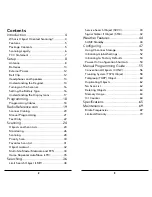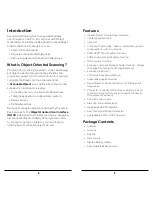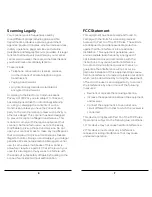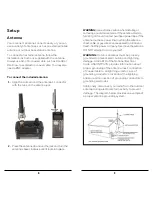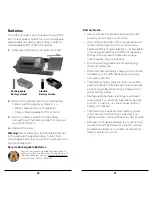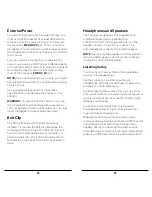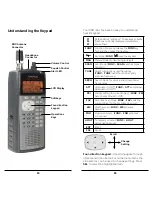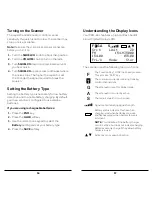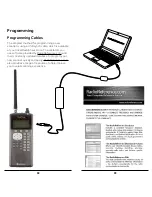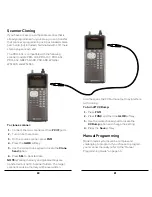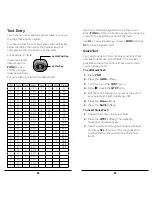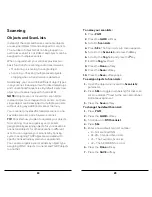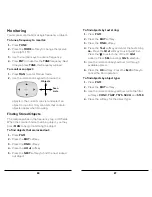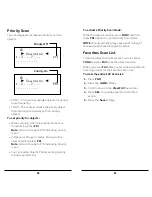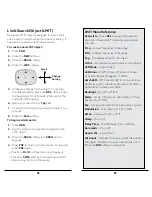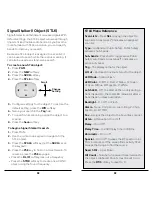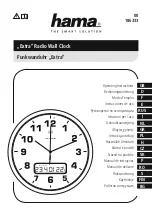
12
13
External Power
To power the scanner and recharge batteries, you
must use a 9VDC adapter of at least 400 mA with
the inner tip set to positive. Connect the plug into
the scanner’s
PWR DC 9V
jack. Then connect the
AC adapter to a standard AC outlet. Always connect
the AC adapter to the scanner before you connect it
to AC power.
You can power the scanner from a vehicle’s 12V
power source using a 9VDC at least 400mA adapter
with 4.75mm outer/1.7mm inner plug (not included).
Its center tip must be set to positive and its plug
must fit the scanner’s
PWR DC 9V
jack.
NOTE:
If your vehicle’s engine is running, you might
hear electrical noise from the engine while scanning.
This is normal.
Using an adapter that does not meet these
specifications could damage the scanner or the
adapter.
WARNING:
To prevent electric shock, do not use
the AC adapter’s polarized plug with an extension
cord, receptacle, or other outlet unless you can fully
insert the blades to prevent blade exposure.
Belt Clip
The PRO-651 ships with the belt clip already
installed. To remove the belt clip, disengage the
retaining catch at the top of the belt clip from the
back of radio, and slide the belt clip upwards. To
attach the belt clip, slide it down into the belt clip
receptacle on the back of the radio until it locks in
place.
Headphones and Speakers
You can plug headphones (not supplied) or an
amplified speaker (not supplied) with a
1/8-inch (3.5 mm) mini-plug earphone or in the
headphone jack on top of your scanner. This
automatically disconnects the internal speaker.
NOTE:
Use an amplified speaker with this scanner;
Non-amplified speakers do not provide sufficient
volume for comfortable listening.
Listening Safely
To protect your hearing, follow these guidelines
when you use headphones:
Set the volume to zero before putting on
headphones. With the headphones on, adjust the
volume to a comfortable level.
Avoid increasing the volume after you set it. Over
time, your sensitivity to a volume level decreases, so
volume levels that do not cause discomfort might
damage your hearing.
Avoid or limit listening at high-volume levels.
Prolonged exposure to high-volume levels can
cause permanent hearing loss.
Wearing headphones while operating a motor
vehicle or riding a bicycle can create a traffic hazard
and is illegal in most areas. Even though some
headphones let you hear some outside sounds
when listening at normal volume levels, they still can
present a traffic hazard. Exercise extreme caution!


